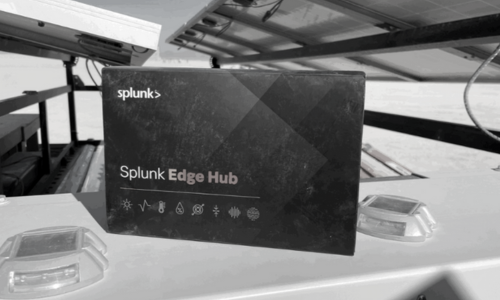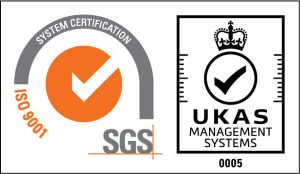
What is Splunk Edge Hub?
Author: Becca Lambert
Release Date: 15/01/2024
Late last year, Splunk announced their latest innovation in IoT data access and processing, Splunk Edge Hub.
Splunk Edge Hub is a fully integrated hardware and software solution with integrated sensors and all the necessary connectivity libraries already integrated into it. Providing the user with a quick and easy to use solution of getting all of their IOT data into their Splunk environment. Edge Hub helps you integrate the data from your environmental sensors, IoT devices and industrial equipment, which is a subset of data which has been historically hard to access.
With the clear visibility the Splunk Edge Hub provides with this data, it can enable improved decisions making in operational conditions and asset monitoring, in order to achieve a much higher level of digital resilience. Helping you fully utilise Splunk's advance analytics platform for all of your operational technology and IoT data needs.
The Splunk Edge Hub is a multi component solution:
- An IoT gateway device equipped with sensors, such as light, temperature and sound sensors, protocols like OPC-UA and MQTT, built-in, housed in a robust outer shell carrying an Ingress Protection (IP) rating of IP66, also preloaded with its own integrated operating system - Edge Hub OS
- An instance of the Splunk Platform, version 9.0+ or Splunk Cloud Victoria
The Splunk Edge Hub Mobile app, this is available on both IOS and android and can be used to easily configure your device(s)
- The Splunk Edge Hub companion apps available out-of-the-box from Splunkbase.

Edge Hub helps address the pain point of data fragmentation which can commonly be associated with data from physical environments, where it can often be difficult to find the root cause of issues and blind spots can be a common occurrence. Splunk Edge Hub allows for the complete aggregation of data from throughout the physical environment, whether this is being placed on top of an existing IoT infrastructure to collate the data collected and further enhance the visibility provided or by being the main collection point for this data, by being physically placed in the environment its monitoring, such as a data centre or manufacturing facility.
The Sensors included in the edge hub are as follows:
- Light
- Accelerometer
- Gyroscope
- Sound
- Pressure
- Air Quality
- Temperature (external and internal)
- Humidity (external)
Along with the inbuilt sensors of the edge hub it comes with a built in network capacity, including WIFI, Cellular, and GPS. This can also extend its capabilities with bluetooth capability, LoRA, wifi and fully supports MQTT, Modbus, SNMP and OPC UA protocols and the device itself comes with two USB ports, which can be used to attach a USB camera to the device utilising the edge hubs build in AI capabilities to monitor people flows within radius of the edge hub device. This further enhances the Edge Hubs environmental monitoring capabilities.
How can Splunk Edge Hub be used to add value to your environment?
It's no secret that the more data you collect, then the better insight you can have into what’s going on around you. This teamed up with the Splunk's powerful analytics platform means that not only is the data you collect more attainable but also allows you to gain a much further insight into the data you are collecting and help you make the most of your infrastructure, services and processes, this then leads to increased visibility and observability over your whole infrastructure and processes.
By utilising the Splunk platform and combining it with the Edge hubs methodology for collecting data, you can have and take action on these insights and help you achieve more with your data.
The sensor data collected by the edge hub can help you observe the status of processes, equipment, system and so much more. When this is combined with the Splunk platform, it can help you gain valuable insights into the trends and information presented in this sensor data, helping you establish accurate alert thresholds, KPIs and help you make informed decisions through these observations and take the appropriate action, identify risk or anomalies. You can also implement predictive maintenance through using the sensor data collected to help predict when any potential issues may occur, and enable you to address any potential failures before they occur, saving any loss which may occur from any potential downtime and help extend the life of equipment.
To conclude, Splunk Edge Hub is a revolutionary innovation to help you combine the insights that can be provided from sensor data with the power of the Splunk platform. It's in-built capabilities allows you to build this on your existing IoT infrastructure or use it as a standalone device.







